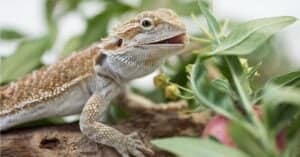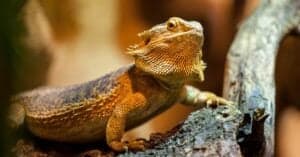Bearded dragons are popular pet lizards because they’re cute, friendly, and relatively easy to care for. Even though their care requirements are simpler compared to other lizards, it’s important to learn about common bearded dragon behaviors. This helps you provide them with the best environment and husbandry possible. It also helps you determine whether your bearded dragon’s behavior is a cause for concern or totally normal.
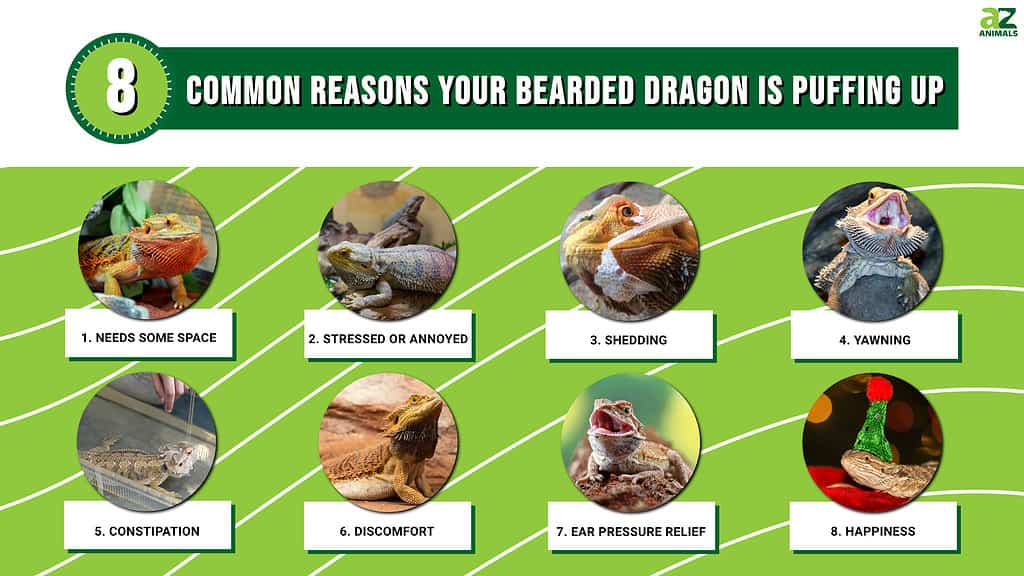
Usually, bearded dragons puff up because they feel threatened or scared. However, they can be happy and well-cared for in an ideal enclosure but still puff up because they’re annoyed with skin sheds, taking back a big meal, or changes in air pressure. Sometimes, bearded dragons puff up just because they want to show off!
If your beardie puffs up often, do you need to address an urgent health issue or fix some elements of their enclosure? You may need to, but don’t panic. Here are eight common reasons why your bearded dragon puffs up.
1. Why Does My Bearded Dragon Puff Up Whenever I’m Near It?

Puffed beards, defensive stances, and hissing are signs that you need to give your bearded dragon space.
©Sara Stanojevic/Shutterstock.com
Did your beardie get settled into their new home recently? Whether you rehome from a reptile rescue or buy from a breeder, adjusting to a new home can take time. Beardies are pretty friendly lizards, but each one has their own personality and temperament. Some will simply need more time to adapt to a new home and environment.
Give your new companion a few weeks to get used to you and their new home. Don’t force any handling if they show starker signs of aggression, like hissing. Talk softly to your dragon and offer food. Provided that you’ve set up an ideal enclosure with enough space and enrichment, they should warm up to you soon enough. Even if they’re not amenable to handling yet, they should at least stop puffing up whenever you stop by.
However, if your bearded dragon appears lethargic and doesn’t want to eat while displaying this behavior, you should contact a vet.
2. Is My Bearded Dragon Stressed?

Your bearded dragon may puff up a sign of stress, annoyance, or discomfort, so check on their needs.
©Amber Roberts/iStock via Getty Images
Puffing up is a common sign of stress in bearded dragons, although it’s not the sole reason why they do this.
Puffing can indicate a temporary annoyance, like a cricket that keeps hopping away. Chronic puffing often equates to more worrisome stress levels if your beardie isn’t eating or defecating for an extended timeframe.
Try to figure out what’s stressing out your lizard. Loud noises and unwanted handling are often the culprits. If it’s too hot or cold, or they don’t have adequate space and hides to use if they feel scared, this can also cause frequent puffing. Female bearded dragons that are pregnant can also puff up from discomfort.
3. Do Bearded Dragons Puff Up When They Shed?
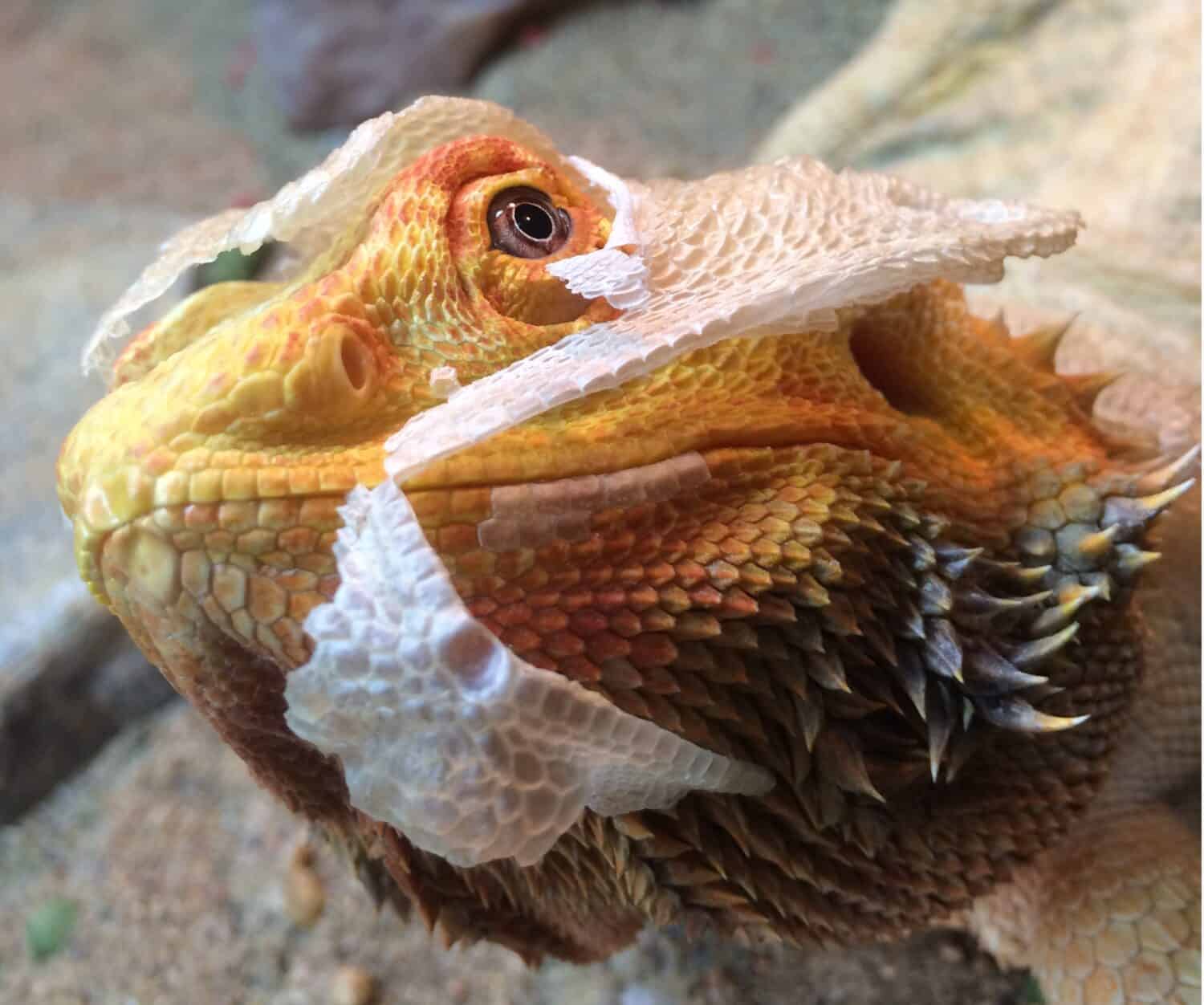
Bearded dragons often puff their beards out during shedding to expedite the process.
©Gayleen Froese/Shutterstock.com
Yes, puffing is sometimes the result of shedding skin. Bearded dragons shed as most reptiles do, and puffing out their beards can expedite the removal of old dead skin. If your lizard’s skin looks dull and flaky or like it has a waxy sheen, this is a sign they’re about to shed. Shedding is a time when lizards can become irritable. It’s normal for shedding lizards to eat less and not be as playful, but watch for overly lethargic behavior.
If your bearded dragon is shedding, don’t pull any pieces off. This can cause an infection and additional stress. Your dragon should be fine shedding their skin on their own in a few days. Extra baths and higher humidity can also expedite shedding. But if they’ve been shedding for more than a week and seem unusually irritated to the point they’re constantly puffing up, you may need to consult a vet about stuck shed.
4. Do Bearded Dragons Yawn?
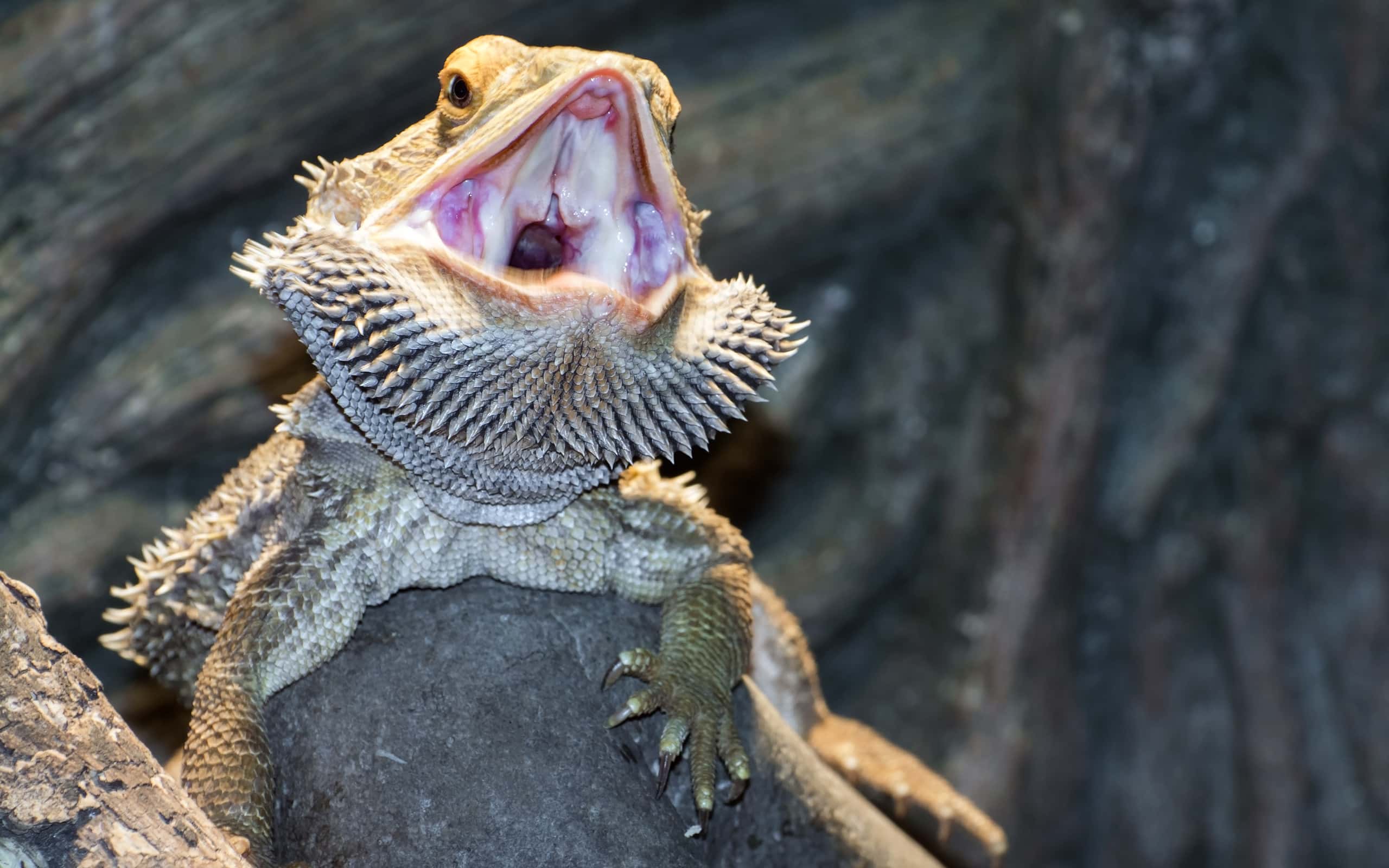
Central bearded dragon (Pogona vitticeps) is posing
©belizar73/iStock via Getty Images
Yes! Bearded dragons can yawn just like people do. Puffing their beards is simply what some of them do when they yawn.
5. Are Bearded Dragons Prone to Constipation?
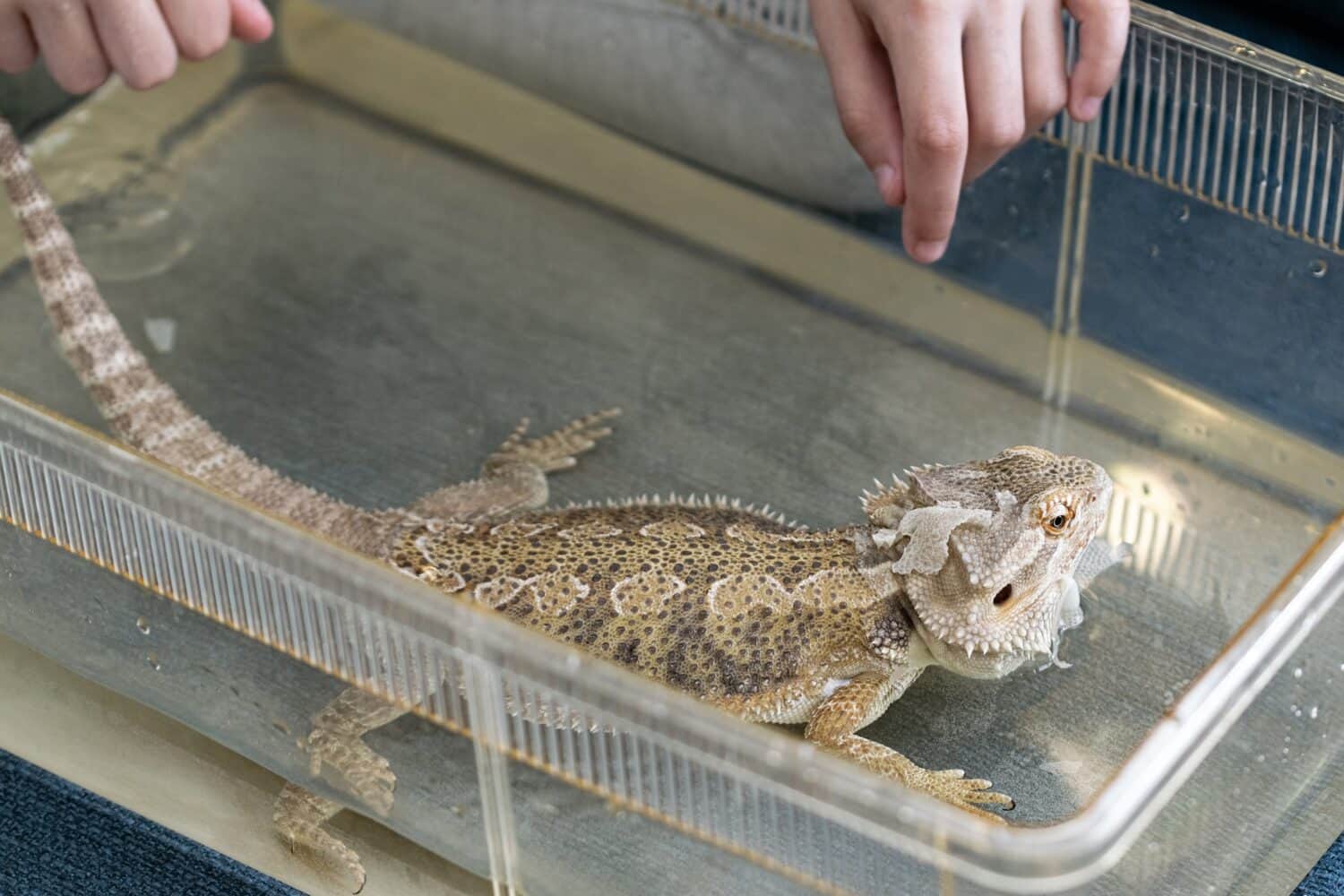
Baths are crucial for your bearded dragon’s health. They can also help with constipation, which can cause them to puff up.
©PhotoRK/Shutterstock.com
If you’ve ever had times in your life when you had a hard time going to the bathroom, it probably didn’t make you very happy or comfortable. Indigestion from a big meal or incompatible food also leaves one worse for the wear. It’s no different for bearded dragons. They’ll express displeasure with gastrointestinal pain by puffing up their beards.
If they have a healthy appetite and eat regularly, they should also defecate regularly. If it’s just indigestion causing your dragon to puff their beard, it should stop after they’ve defecated. But if you notice that your bearded dragon is eating, yet there’s a conspicuous lack of dragon droppings in the enclosure, it’s a sign that they have an impaction. The distress from impaction can make them puff up their beards and/or stomachs.
Bearded dragons need a bath every 4-8 days, but you might need to bathe them more often if they’re constipated. Some even only defecate during bathtime. If extra baths aren’t helping, you should contact a reptile vet.
6. Is a Black Beard Cause for Concern?

Black beards often accompany beard puffing to express discomfort, such as a female bearded dragon’s pregnancy.
©Dudley Simpson/Shutterstock.com
Bearded dragons don’t have quite the same range as chameleons, but they can turn different colors. Something that often alarms new reptile keepers is when their beardie’s beard turns black.
It usually isn’t a reason to panic. Bearded dragons turn their beards black if they’re too cold since black surfaces absorb more heat. They also do this if they want to appear bigger and scarier to other animals, such as other household pets.
Males sometimes turn their beards black to attract females. Inversely, pregnant females often turn their beards black and puff them out if they’re feeling discomfort. If your female beardie is pregnant, regularly check for signs that she is egg-bound. Weight loss, lethargy, and attempts to lay the eggs with none coming out are the most common signs.
Black beards can go hand-in-hand with frequent puffing if your bearded dragon is having trouble adjusting to their new home. A black beard itself often isn’t a huge deal, but watch for more dire signs like lethargy and lack of defecation.
7. Do Bearded Dragons Have Ears?

Beardies have inner and middle ears, so they may puff trying to relieve the pressure on their ear canals.
©Opayaza12/Shutterstock.com
Bearded dragons don’t have outer ears like humans do, but they have inner and middle ears. They’re covered by a tympanic membrane and resemble holes near the far sides of their jaws.
Because these lizards have inner ears, their ears can pop in air pressure and elevation changes similarly to human ears. This can cause prolonged puffing because it’s an effort to relieve the pressure on their ear canals.
8. Do Bearded Dragons Puff Up When They’re Happy?
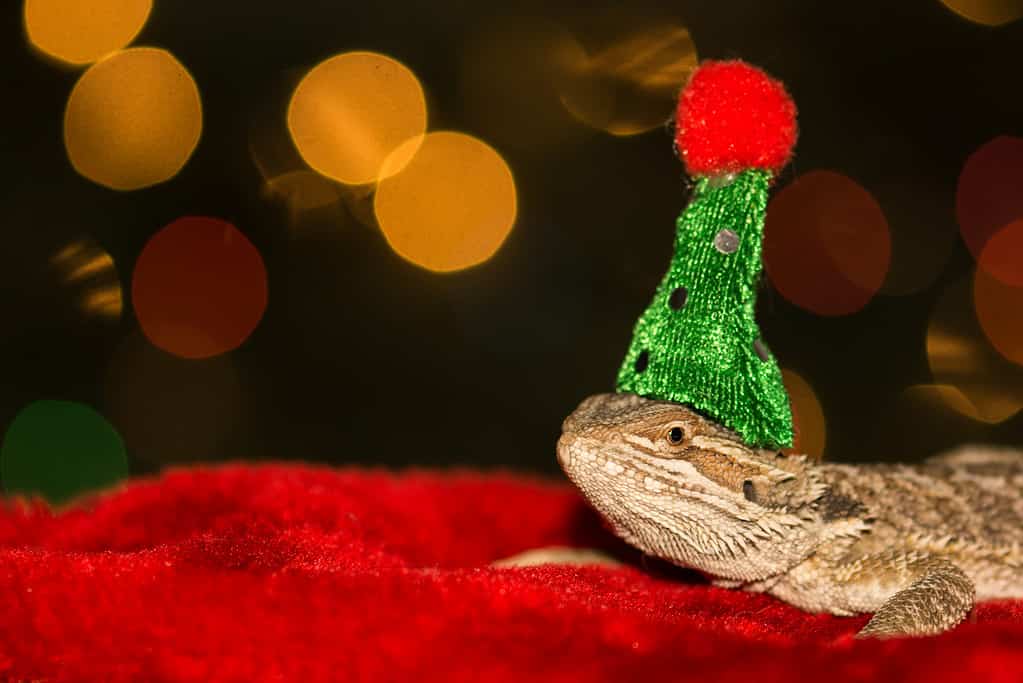
Your beardie may be a happy dragon and puff or strut to show off.
©JasonOndreicka/iStock via Getty Images
Puffing isn’t always a sign of distress or annoyance. Your bearded dragon could be perfectly happy to the point that they want to show off! When they want to strut for their humans, appearing larger is their prerogative. For bearded dragons, this means puffing out their beards to look bigger.
What Reptile Keepers Also Want to Know
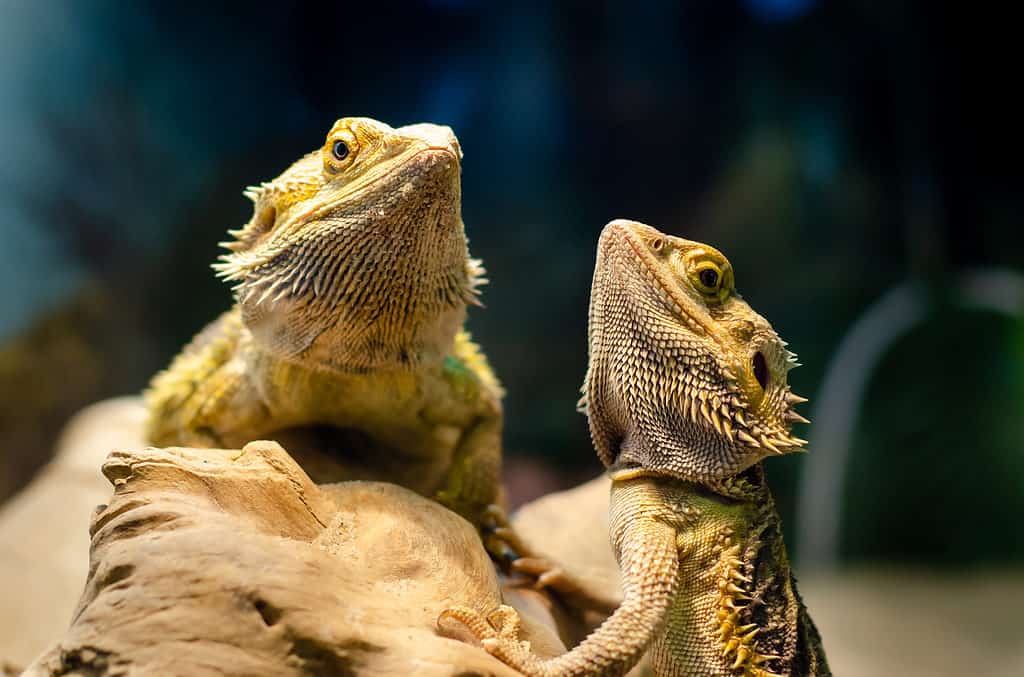
As a bearded dragon owner, you may wonder why your beardie is puffing up. The answer could be something common or a more serious issue, such as an illness.
©Lutsenko_Oleksandr/Shutterstock.com
Why does my bearded dragon randomly puff up?
Bearded dragons puff up because of temporary annoyances like loud noises but also because they want to appear larger and more intimidating when threatened. Puffing up is also common when shedding, experiencing indigestion or impaction, and pressure on the ear canal. It can indicate more pressing issues that need to be addressed, like inadequate habitats or sickness.
What are the signs of a sick bearded dragon?
Lethargy, droopy eyes, breathing difficulties, and lack of eating and/or defecation are the most common signs that your bearded dragon is sick. If your bearded dragon continually puffs up and also gapes at the mouth or has large amounts of mucus around the nostrils and mouth, this is usually a sign of illness.
How do I know if my bearded dragon is too hot?
Bearded dragons don’t sweat, so they will hold their mouths open if the enclosure is too hot. If they continually mouth-breathe, this is a sign you need to reduce the heat levels.
The photo featured at the top of this post is © Ken Griffiths/Shutterstock.com
Thank you for reading! Have some feedback for us? Contact the AZ Animals editorial team.




